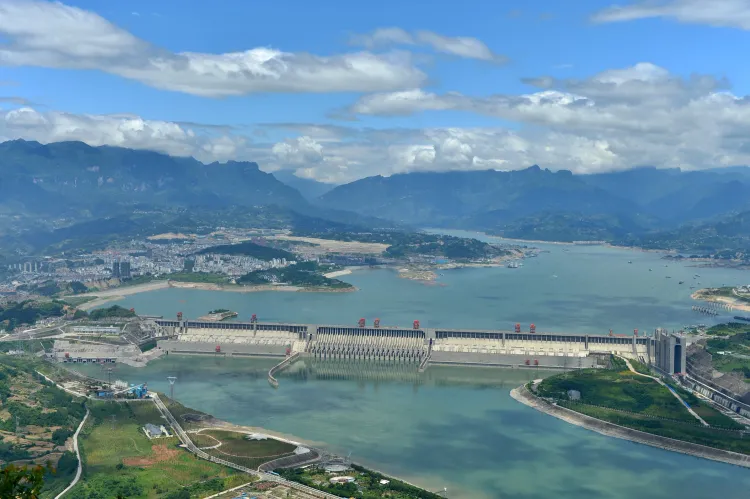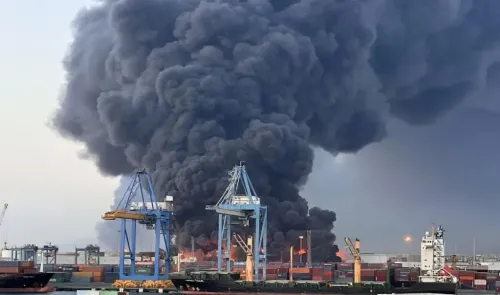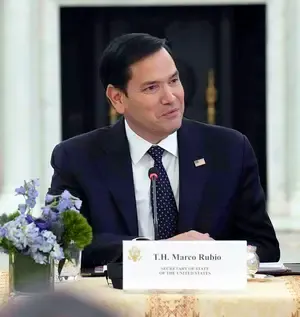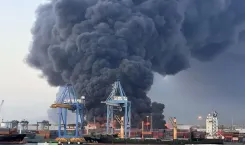What Impact Will China's Mega Dam Project on the Brahmaputra Have?

Synopsis
Key Takeaways
- China has initiated a major dam project on the Yarlung Tsangpo River.
- Concerns are raised regarding its impact on downstream countries, particularly India and Bangladesh.
- The project involves significant investment and aims to generate substantial hydropower.
- India is actively monitoring developments and advocating for transparency.
- This issue highlights the complexities of trans-border water management.
Beijing/New Delhi, July 19 (NationPress) On Saturday, China formally initiated the construction of a significant dam project along the lower stretches of the Yarlung Tsangpo, which is the upper reaches of the Brahmaputra River in Tibet. This development has sparked substantial concerns among downstream nations, notably India and Bangladesh.
The groundbreaking ceremony was attended by Chinese Premier Li Qiang, who is also a member of the Standing Committee of the Political Bureau of the Communist Party of China (CPC) Central Committee. He announced the commencement of the Yarlung Zangbo River Lower Reaches Hydropower Project in the Tibet region.
Key figures from various central and state departments, relevant enterprises, members of the expert advisory committee for this hydropower project, and representatives from local communities were present at the ceremony, as reported by Xinhua news agency.
The project is set to utilize a development method that involves straightening bends and diverting water through tunnels, with plans to construct five cascade power stations. The total investment is estimated at around 1.2 trillion yuan (approximately 167.8 billion US dollars). The project aims to primarily supply electricity for external consumption while also catering to the local energy needs of Tibet.
Despite the Chinese government's assurances that the project will prioritize electricity generation for external markets and local demand in Xizang, its construction poses a significant risk to the interests of downstream nations along the Brahmaputra.
India is closely monitoring developments related to the Brahmaputra River, including China's hydropower initiatives, and has implemented necessary measures to protect its interests, including actions to safeguard the lives and livelihoods of Indian citizens in downstream regions.
Following China's announcement of the mega dam project, New Delhi expressed its concerns to the Chinese government on December 30 last year, emphasizing the need for transparency and consultation with downstream countries.
“Issues regarding trans-border rivers are discussed with China under an established Expert Level Mechanism initiated in 2006, as well as through diplomatic channels. As a lower riparian state with established rights to the waters of these rivers, the Government has consistently communicated its views and concerns to Chinese authorities, urging them to ensure that the interests of downstream states are not compromised by any upstream activities,” stated Kirti Vardhan Singh, Minister of State in the Ministry of External Affairs (MEA), during a response in Rajya Sabha on March 27 regarding China's approval of the mega hydropower project on the Yarlung Tsangpo amid India's concerns about its downstream effects.
This issue was also addressed during Foreign Secretary Vikram Misri's visit to Beijing for a meeting of the Foreign Secretary-Vice Foreign Minister mechanism on January 26-27, which led to both nations agreeing to resume the Kailash Mansarovar Yatra.
“During this visit, India and China agreed to convene an early meeting of the Expert Level Mechanism to discuss the resumption of hydrological data provision and other cooperation concerning trans-border rivers. The Indian Government remains engaged with China on trans-border river issues to protect our interests,” MoS Vardhan reiterated in Parliament.
Earlier this week, External Affairs Minister S. Jaishankar met with Chinese President Xi Jinping in Beijing to discuss the trajectory of India-China bilateral relations.
This meeting was part of the Shanghai Cooperation Organisation (SCO) Council of Foreign Ministers' engagement with the Chinese President.
During discussions with Chinese Foreign Minister Wang Yi, EAM Jaishankar stressed the importance of a long-term strategy for resolving bilateral challenges.
“It is our responsibility to address issues related to borders, normalize people-to-people exchanges, and remove restrictive trade barriers. I am confident that based on mutual respect, interest, and sensitivity, our ties can progress positively,” he posted on X following the meeting on Monday.










